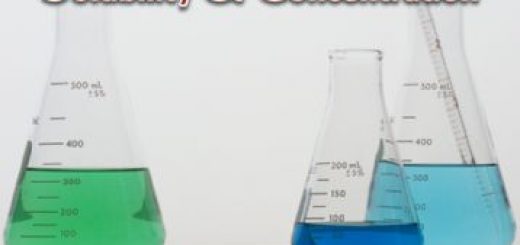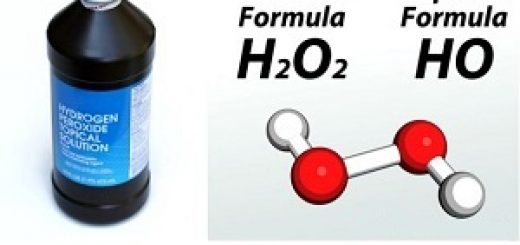Graduation of the properties of the elements in the modern periodic table
There is a graduation of the properties of the elements in the modern periodic table and there is a relation between these properties and the electronic configuration of elements, The graduation of some properties of the elements in the group (A) and periods such as atomic size property, electronegativity property, metallic, and non-metallic property.
Atomic size property
The atomic size is determined by knowing the atomic radius of the atom and its measuring unit is picometer (Pm), Picometer = part of million of the million part of a meter, [picometre = 1 × 10 m-12].
Graduation of atomic size property of elements in the periodic table
Atomic size in the same period: The atomic size decreases from left to right in the same period, because by increasing the atomic number in the same period, the attraction force between the positive nucleus & the outermost electrons increases. such as the atomic sizes of the elements of the second period.
Atomic size in the same group: The atomic size increases from up to down in the same group because by increasing the atomic number in the same group, the number of energy levels occupied with electrons increases. such as the atomic sizes of the elements of the group (1).
We include that:
- The atomic size of the elements of the same period is inversely proportional to the atomic number.
- The atomic size of the elements of the same group is directly proportional to the atomic number.
The elements of the group (1A) are the largest atomic size elements in the modern periodic table, Cesium (Cs) is the largest atomic size element in the modern periodic table, where it is located at the bottom left of the periodic table, Fluorine (F) is the smallest atomic size element in the modern periodic table, where it is located at the top right of the periodic table.
The atomic size of lithium (3Li) is greater than that of beryllium (4Be) and smaller than that of sodium (11Na), because by increasing the atomic number in the same period, the attraction force between the positive nucleus and the outermost electrons increases, so the atomic size of lithium (3Li) is greater than that of beryllium (4Be).
And because by increasing the atomic number in the same group, the number of energy levels occupied with electrons increases, so the atomic size of lithium (3Li) is smaller than that of sodium (11Na).
Electronegativity Property
The atoms of elements combine together by chemical bonds forming elements molecules or compound molecules, The ability of the atoms of the elements differs to attract the electrons of the bond which is known as the electronegativity.
Electronegativity is the ability of the atom in a covalent molecule to attract the electrons of the chemical bonds towards itself, Each element has its own value of electronegativity, Inert gases haven’t electronegativity, Because they don’t combine with other elements under normal conditions.
The difference in electronegativity
The difference in electronegativity between combined elements plays the main role in the determination of the kind of the formed compound, It may be:
- A polar compound.
- A non-polar compound.
- An ionic compound.
If the difference in electronegativity between elements of a covalent compound molecule equals zero, the bond in this molecule is described as a pure covalent bond. As in diatomic gases like oxygen molecule (O2).
Polar compounds
A polar compound is a covalent compound, in which the difference in electronegativity between its elements is relatively high, Examples:
- The water molecule (H2O): It consists of a combination of one oxygen atom with two hydrogen atoms.
- Ammonia molecule (NH3): It consists of a combination of one nitrogen atom with three hydrogen atoms
Water and ammonia are from the polar covalent compound because the difference in electronegativity between the elements of each of them is relatively high. The polarity of the water molecule is stronger than that of the ammonia molecule because the difference in electronegativity between oxygen and hydrogen in a water molecule is greater than the difference between nitrogen and hydrogen in the ammonia molecule.
The difference in electronegativity between the elements of Water (H2O): Oxygen (3.5) – hydrogen (2.1) = 1.4. Ammonia (NH3): Nitrogen (3) – Hydrogen (2.1) = 0.9.
Metallic and non-metallic property
Elements in nature are classified according to their properties and electronic structure into four main kinds: Metals, Nonmetals, Metalloids (Semi-metals), and Noble gases.
Metals
They are the elements, which have less than four electrons in their outermost energy levels. During the chemical reaction, The atoms of metallic elements tend to lose their outermost electrons (valency shells electrons) and change into positive ions to reach the electronic configuration of the nearest inert gas preceding them in the periodic table.
The positive ions carry a number of positive charges equal to the number of the lost electrons. The positive ion is an atom of a metallic element that lost one electron or more during the chemical reaction. Berzelius was the first scientist who classified the elements into metals and nonmetals, The electronic configuration of (Na+), (Mg+2), and (Al+3) ions is similar to the electronic configuration of neon (10Ne) atom.
Nonmetals
They are the elements, which have more than four electrons in their outermost energy levels. During the chemical reaction, the atoms of nonmetallic elements tend to gain electrons and change into negative ions to reach the electronic configuration of the nearest gas following them in the periodic table.
A negative ion is an atom of the nonmetallic element which gained one electron or more during the chemical reaction, The negative ions carry a number of negative charges equal to the number of the gained electrons
During the chemical reaction, Sodium (11Na) atom tends to form a positive ion, while chlorine (17Cl) atom tends to form a negative ion because sodium atom loses the outermost electron forming a positive ion, while chlorine atom is a nonmetal element, so it gains an electron forming a negative ion.
Both sodium ion (Na+) and fluoride ion (F‾) have the same number of electrons because, during chemical reactions, sodium atom (11Na) loses one electron and a fluorine atom (9F) gains one electron so, the number of electrons becomes 10 electrons in both ions.
Comparison between the positive ion and the negative ion:
The positive ion is an atom of a metallic element that loses one electron or more during the chemical reaction. The number of its electrons is less than that of its protons. It carries a number of positive charges equal to the number of the lost electrons, The number of its energy levels is less than the number of energy levels in its atom, Its electronic configuration is similar to that of the nearest inert gas preceding its atom in the periodic table.
The negative ion is an atom of a nonmetallic element that gains one electron or more during the chemical reaction, the number of its electrons is more than that of its protons, It carries a number of negative charges equal to the number of the gained electrons, The number of its energy levels is equal to the number of energy levels in its atom, Its electronic configuration is similar to that of the nearest inert gas following its atom in the periodic table.
Metalloids (semi-metallic elements)
Metalloids are located in p-block, Metalloids, Metalloids are the elements, which have the properties of both metals and nonmetals, They are Boron (B), Silicon (Si), Germanium (Ge), Arsenic (As), Antimony (Sb), and Tellurium (Te). It is difficult to know the metalloids from their electronic structure due to the difference in numbers of the electrons in their valency shells.
Graduation of the metallic and nonmetallic property of elements in the periodic table
In the same period, each period starts with a strong metal “except the first period”. By increasing the atomic number (as we go from left to right), the metallic property decreases till we reach metalloids, Then the nonmetallic property appears and increases by increasing the atomic number till we reach the strongest nonmetal in group 17 (7A), Then the period ends with an inert gas in group 18
In a group that starts with a metal, The metallic property increases gradually as we go from top to bottom as in group (1A) because as the atomic number increases, the atomic size of metallic elements increases, so the ability to lose the outermost electrons increases.
The metallic property of the elements of the group which begins with metal is directly proportional to the atomic number, Lithium (Li) is the lowest metallic element in the group (1A), Cesium (Cs) is the strongest metallic element in the group (1A). Cesium is considered one of the strongest metallic elements, Because cesium has the largest atomic size, so it can lose its valency electron easily.
There is a direct relation between the atomic size of an element and its metallic property, By increasing the atomic size. the metallic property increases. In nonmetallic groups (groups which start with nonmetal): The nonmetallic property decreases gradually as we go from top to bottom as in group (7A).
Chemical activity series, Chemical properties of metals & nonmetals
Modern periodic table and classification of Elements
Elements classification, Mendeleev’s, Moseley’s & Modern periodic table
Classification of elements in Long-form periodic table, Ionization Energy & Oxidation numbers
Transition elements & Economic importance of elements of the first transition series
Radius property, Ionization potential, Electron affinity & Electronegativity



